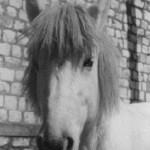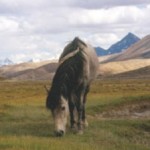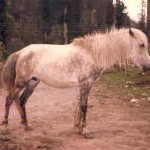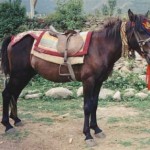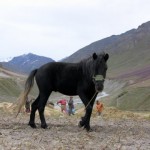Spiti Horse
The Spiti horse is a small-statured equine breed, hailing from the Himachal Pradesh region of the northern part of India. Attaining their name from the Spiti river, where they were bred, these horses were widely used as pack animals because of their ability to pursue long journeys while carrying heavy loads on their back quite comfortably.
Spiti Horse Pictures
- Spiti Horse Images
- Spiti Horse Mare
- Spiti Horse Pictures
- Spiti Horse Pony
- Spiti Horse
- Spiti Horses
Quick Information
| Other Names | Chamurthi, Chhumurti |
| Temperament and Personality | Intelligent, willing, quiet, alert, sometimes nervous or docile, though not always in a good disposition |
| Physical Characteristics | Solid and compact body; strong bones; convex face; small to medium sized black eyes; erect ears; straight and long tail; deep chest; slightly sloped shoulders; low withers; short back; thick, coarse-haired legs; long manes with hairs of length 20 to 30 cm; |
| Colors | Grey, dun, black, brown, palomino yellow, and white body with black spots |
| Common Use | General riding and pack animal |
| Height | Male: 12 hands; Female: 9 hands |
| Weight | Male: 185 kg; Female: 160 kg |
| Lifespan | 22 to 25 years |
| Health | Healthy and capable of resisting disease |
| Popular Traits | High stamina, surefooted |
| Feeding/Diet | Pasture available in the Alpine regions |
| Gaits | Is five-gaited, trotting on its laterals instead of diagonals helping the rider to sit in a comfortable way. |
| Country of Origin | India |
| Ancestors | Certain Tibetan breeds |
History
Though no concrete details have been provided regarding the evolution and ancestors of these horses, legend has it that this breed seems to descend from wild horses known as Kiang, inhabiting the Alpine regions of Spiti, Changthang region of Ladakh as well as the pastures of Tibet. However, this perception was changed as the latter belongs to the ass family. In fact, these horses have a close resemblance to the Mongolian and Tibetan breeds that might even be their ancestors. An analysis of genetic diversity has closely linked them to the Zanskari horses, found in the Leh and Ladakh regions of Jammu and Kashmir. They are mostly found in the Kullu, Spiti, Kinnaur and Lahaul districts of Himachal Pradesh. However, these horses are not well adapted in thriving in very high altitudes. According to certain reports, the population of this breed was said to be around 4000 in the year 2004. In 2007, the Food and Agricultural Organization or FAO mentioned its conservation status to be “not at risk”. Lately, the Spiti horses have been marked as “endangered”. The breeding of these horses was done in a traditional way, where the villagers used a particular stallion to cover all the mares, with the stallions being changed every year.


